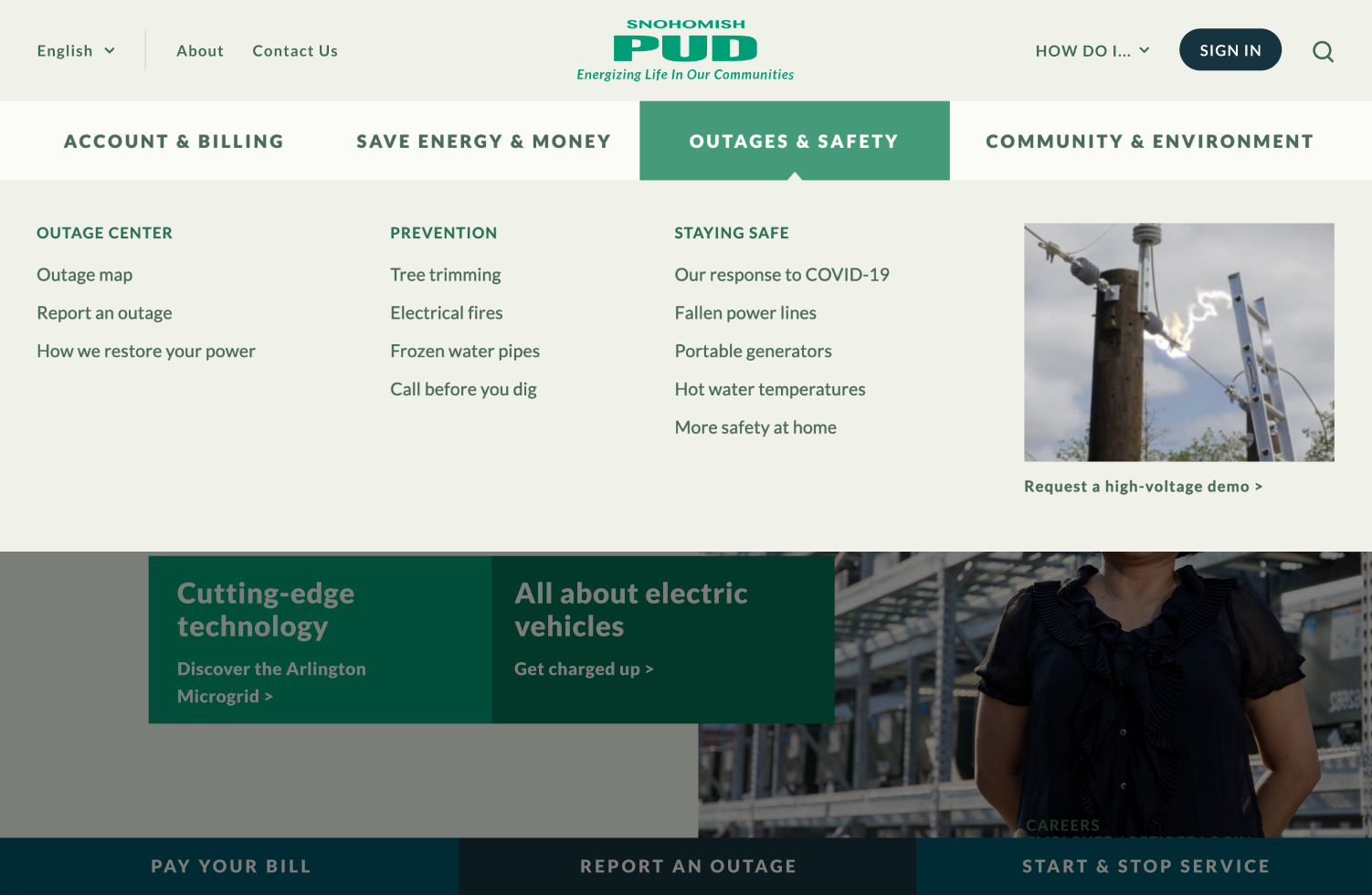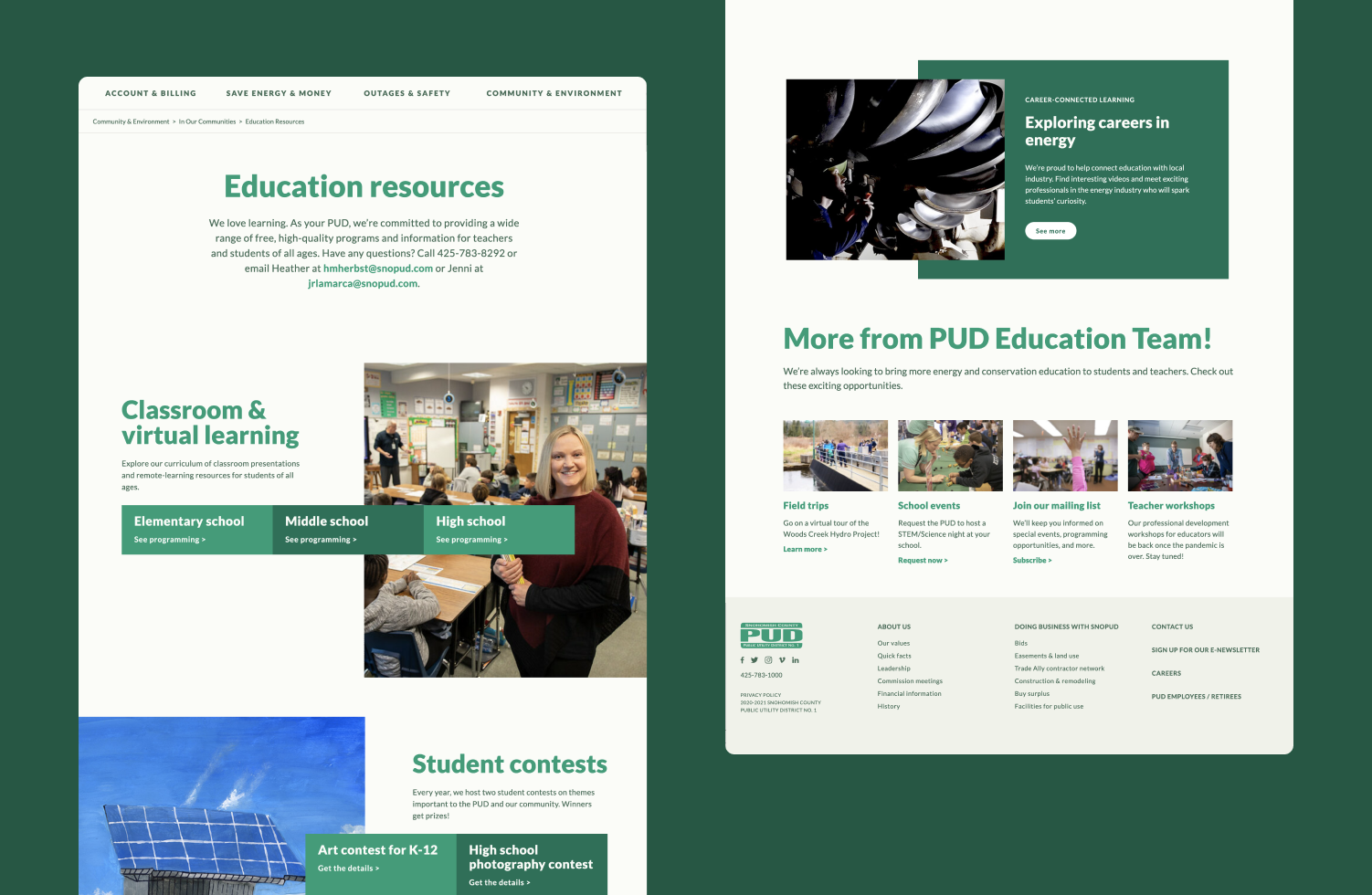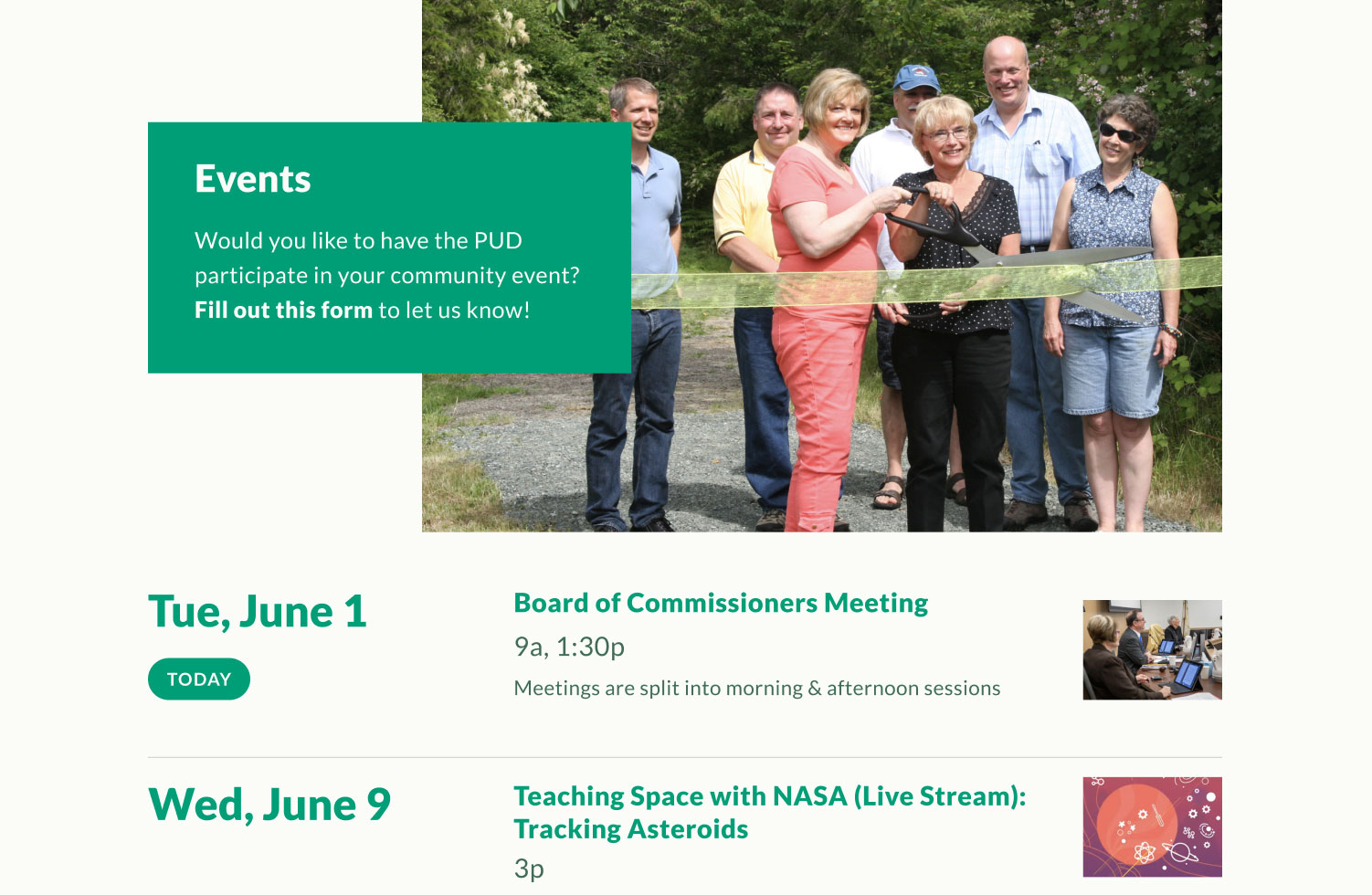WEBSITE
Snohomish County Public Utility District
Transforming a sprawling, decade-old website to put the user first.
Branding / Content Strategy / Custom WordPress Development / Information Architecture / Website Design





Snohomish County PUD is the second-largest publicly owned utility in Washington state, serving over 360,000 electric customers and 23,000 water customers. We spearheaded their first website redesign in over a decade, delivering a soup-to-nuts overhaul that put the customer first.
THE GOAL
Helping customers quickly find the information they want and need, updating the design to help SnoPUD better tell their story, and creating a more efficient CMS experience to improve site management.
A task-based navigation to make a sprawling site more accessible
The last redesign SnoPUD kicked off was in 2009. In the years since, the site had slowly grown into a labyrinth of over 700 pages. Navigating the site (especially as a newcomer) was a quest — 16 topics in the top-level nav, plus drop-downs, nested menus in the left column, links to internal pages on the right… so many places to click!
We knew from the get-go that SnoPUD would benefit from a much-simplified task-based navigation, as opposed to the mix of general audiences and internal business groups that they were currently using to organize their content. A cursory exploration of the site revealed that most content was applicable to all audiences, regardless of whether they had a business account or were a residential customer — the process of preparing for a winter storm or learning about community engagement opportunities were the same.
Plus, after our initial discovery, SnoPUD had a fairly concise list of objectives that the majority of visitors come to the site to fulfill: paying their bill, tracking and reporting power outages, researching rebates. There were equally straightforward business objectives the SnoPUD team wanted to accomplish, including promoting their commitment to clean energy and energizing life in their communities.

We used that shortlist of customer and business goals to target four main categories for the top-level navigation, with secondary priorities housed in the footer. From there, we developed a logical, efficient site map — with floating homepage links and a helpful little “How do I…” drop-down menu in the header as a safety net for visitors (or SnoPUD stakeholders) who required one-click access to a common page.
A site-wide content audit to make the site more useful
Seven hundred pages is a lot to manage, particularly when many of those pages are not being visited. We knew a bunch of those pages could go. So did SnoPUD. And there’s no better time than a site redesign to do some deep cleaning.
Our team worked side by side with SnoPUD to conduct an audit of every page on their site to determine what should stay and what could be cut. From there, it was an exercise in prioritization and consolidation to trim bloat and make the website as nimble and usable as possible.
We ultimately launched a site with roughly 300 pages of useful information for a diverse range of audiences: a 60% reduction in URLs from the site.
A modular design to make building a few hundred unique pages manageable.
Like we discuss in our Quick Overview of Advanced Custom Fields, we’re never designing hundreds of pages for any website engagement. We’re designing the various components that can be mixed and matched like LEGOs to create those pages.

For SnoPUD, that ended up being a library of about 30 unique content blocks that would be used across any page, from the editorial-style Education Resources hub to an archive of meeting notes to a straightforward information post. Each pre-styled block can be used in endless combinations to create beautiful custom pages — while on the backend, it’s as easy as fill in the blank.

That said, not every experience on Snopud.com was built using these blocks. We supplemented the individual “page builder” modules with unique, one-off designs when the content called for it, including a calendar feed for events, a stories blog, a directory of different local contractors, and a fly-in integrated with SnoPUDs customer portal that allowed users to instantly log into their account.

